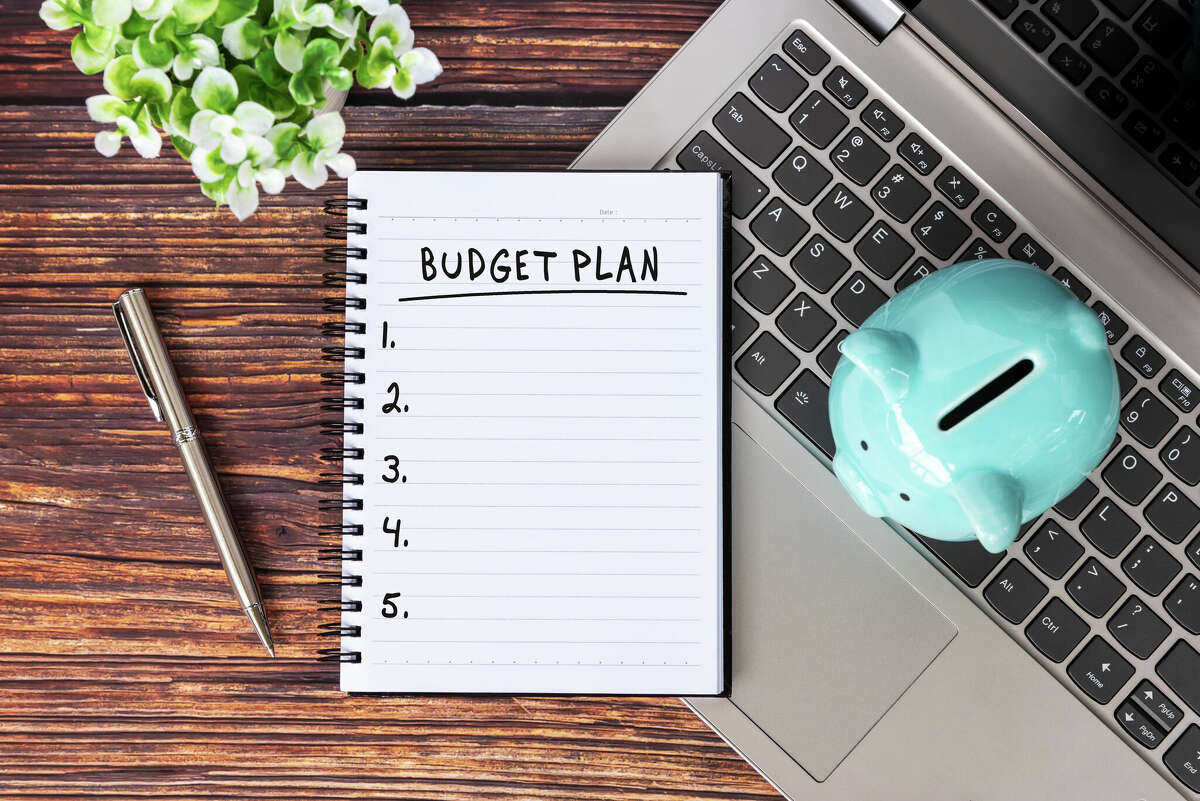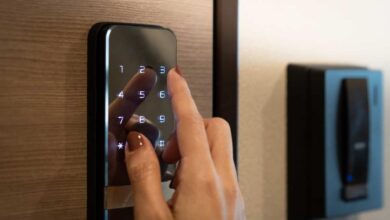Streamline Your Finances: Essential Digital Budgeting Tips

In the era of the digital lifestyle, managing money shouldn’t feel like a monthly battle with spreadsheets and receipts. We live in a world saturated with subscriptions, instant payment options, and endless consumer temptations.
The key to financial freedom isn’t earning a fortune; it’s mastering the art of the minimalist digital budget. This isn’t about deprivation; it’s about intentional spending, leveraging technology, and cutting out the digital and physical clutter that drains your wealth.
A minimalist budget is powerful because it simplifies complexity. It shifts your focus from tracking every penny to ensuring every dollar spent aligns with your true values and long-term goals.
This comprehensive guide details the actionable, technology-driven strategies you need to effortlessly take control of your finances, ensuring your money works for your freedom, not against it.
I. The Foundation: Mindset and Digital Detox

Before diving into apps and numbers, you must establish the psychological framework for successful minimalist budgeting. It starts with recognizing the digital traps that encourage spending.
A. Taming the Impulse Shopping Monster
The digital world is engineered to make you spend, often unconsciously. Subscription services, one-click purchases, and targeted ads are your primary adversaries.
A. Unsubscribe from Retail Email Lists: The simplest and most immediate way to reduce impulse buying is to eliminate the trigger. Stop allowing promotional emails, discounts, and “flash sale” alerts into your inbox. Use an email organization tool to quickly mass-unsubscribe from all non-essential retail communication.
B. Implement a Mandatory “Cooling-Off” Period: Never make an unplanned purchase immediately, especially online. For any non-essential item over a set dollar amount (e.g., $50 or $100), enforce a minimum 24- to 72-hour delay. Place the item in the cart, walk away, and revisit it later. Often, the desire fades completely.
C. Delete Saved Payment Information: Remove credit card details from all online shopping sites (Amazon, app stores, favorite retailers). Adding a card manually for every purchase forces a moment of friction and mindfulness, acting as a crucial brake on impulse spending.
B. The Subscription Cull: Digital Minimalism
Our digital life is often littered with recurring payments for services we barely use. This “subscription creep” is one of the biggest silent budget killers.
A. Conduct a Subscription Audit: Go through your bank and credit card statements from the last 12 months. List every recurring charge—Netflix, software, apps, gym memberships, forgotten free trials. You’ll be shocked by the total.
B. Implement the “Usage Test”: For every subscription, ask a simple question: “Did I use this service productively in the last 30 days?” If the answer is no, cancel it. Don’t worry about “just in case” use; you can always resubscribe later if truly needed.
C. Leverage Subscription Management Apps: Specialized FinTech tools can automatically scan your statements and flag recurring charges. Some even allow you to cancel services directly within the app, simplifying the process of digital decluttering.
II. The Minimalist Digital Budgeting System
The core principle of minimalist budgeting is to focus your energy on the few largest, most impactful categories, not the minutiae. The 50/30/20 Rule is an excellent framework, streamlined and automated by modern apps.
A. Automated Budget Allocation (The 50/30/20 Rule)
This rule is a powerful, simple method for intentional spending, easily enforced by modern digital tools.
A. 50% for Needs (The Unchangeable Core): This covers your non-negotiable fixed costs: rent/mortgage, minimum debt payments, groceries, utilities, and insurance. The minimalist goal is to keep this category as low as possible, ideally under 50% of your net income, to maximize discretionary funds.
B. 30% for Wants (Intentional Freedom): This is your discretionary spending for lifestyle items: dining out, entertainment, subscriptions you actually use, travel, and hobbies. This is the category you actively manage and cut back on when necessary.
C. 20% for Savings and Debt Repayment (Your Future Self): This is the most crucial percentage. It’s for investments, retirement contributions, and extra payments toward high-interest debt (beyond the minimum). Automate this transfer to happen the day your paycheck lands.
B. The Power of Zero-Effort Tracking
Minimalist budgeting means you shouldn’t spend more than five minutes a week on tracking once the system is set up.
A. Link All Accounts to a Single App: Use a high-quality budgeting application (like YNAB, Mint, or specialized FinTech tools) that securely links to all your bank accounts, credit cards, and investment portfolios. This provides an instant, real-time snapshot of your finances without manual entry.
B. Use Virtual Envelopes or Buckets: Embrace the Zero-Based Budgeting (ZBB) concept using the digital “envelope” feature found in many apps. Every dollar is assigned a purpose (rent, travel, groceries) at the start of the month. Once the envelope is empty, spending in that category stops until the next pay cycle.
C. Automate Alert System: Configure the app to send instant notifications when you approach the limit of a “Wants” category envelope (e.g., 80% spent on dining out). This proactive alert prevents overspending before it happens, removing the need for constant vigilance.
III. Digital Money Optimization and Growth

A minimalist approach to money isn’t just about saving; it’s about making the money you do have work harder for you, effortlessly.
A. Income Automation for Growth
Leverage FinTech tools to automate the process of saving and investing, removing human emotion from the equation.
A. Scheduled Savings Transfers: Set up an automatic recurring transfer (matching your 20% future-self allocation) from your checking account to a high-yield savings account or investment account, timed immediately after your salary deposit. Pay yourself first—before any bills or discretionary spending.
B. Round-Up Investments: Many banking and investing apps offer a “round-up” feature. Every time you spend $4.30, the app automatically rounds the transaction up to $5.00 and deposits the extra $0.70 into an investment or savings account. This is micro-investing with zero effort.
C. Dynamic Debt Repayment: Use online calculators or FinTech tools to analyze your debts and automatically apply extra payments to the highest-interest loan (the debt avalanche method), significantly reducing the total amount of interest paid over the life of your loans.
B. Smarter Digital Spending Tools
Even necessary spending can be optimized using modern digital wallets and cards.
A. Maximize Digital Rewards: Consolidate your spending onto one or two high-rewards credit cards that align with your major spending categories (e.g., travel points for digital nomads, cash back for groceries). Pay the balance in full every month—the rewards are only worthwhile if you avoid interest charges.
B. Use Digital Wallets for Security: Paying with a digital wallet (Apple Pay, Google Pay) is often more secure than using the physical card, as the transaction relies on a tokenized, one-time payment code rather than exposing your actual card number.
C. Utilize Price Tracking Tools: Browser extensions and apps can monitor the price of a product you want. Instead of constantly checking, you receive an automatic alert when the item drops to your target price, ensuring you buy only when the value aligns with your minimalist budget.
IV. The Home and Lifestyle Minimalism
A truly minimalist digital budget extends beyond bank accounts into the physical and digital spaces you inhabit, reducing the need to spend in the first place.
A. Cutting the Cord and Simplifying Entertainment
Entertainment is a major budget drain, especially in a digital lifestyle.
A. Audit Your Streaming Services: Instead of subscribing to all major streaming platforms simultaneously, practice “subscription cycling.” Subscribe to one service at a time, binge-watch the content you want, and cancel before the next billing cycle. Rotate your subscriptions throughout the year.
B. Utilize Digital Public Libraries: Modern library apps allow you to check out thousands of e-books, audiobooks, and even stream movies and magazines for free. This immediately cuts down on spending for digital entertainment and reading material.
C. Consolidate Communication: If you pay for multiple communication tools (e.g., premium texting apps, specific video conferencing plans), look to consolidate. Leverage free, all-in-one tools like email, WhatsApp, or standard video conferencing apps to eliminate redundant bills.
B. Practical Digital Decluttering
Digital clutter—endless files, unused apps, duplicated photos—doesn’t just slow your computer; it can lead to unnecessary costs for cloud storage and maintenance.
A. Perform a Cloud Storage Cleanup: Regularly delete unused files, large media backups, and duplicate photos. This reduces your reliance on large, expensive cloud storage tiers. The goal is to fit everything into a lower-cost or even free storage plan.
B. Sell Unused Digital Assets: Look for digital assets you own but no longer use—video games, gift cards, or unused software licenses. Sell or trade them on authorized platforms to recoup capital and declutter your digital possession list.
C. Minimize Digital Footprint: The fewer apps you use and the fewer services you interact with, the less data you share, and the lower your exposure to targeted, tempting advertising. This intentional reduction in digital noise supports your minimalist spending goals.
Conclusion
Mastering the minimalist digital budget is the ultimate life hack for the modern era. It’s a liberation from the ceaseless, automated temptations that technology has placed at our fingertips. This philosophy isn’t rooted in penny-pinching; it’s rooted in intentionality and automation.
By strategically leveraging the very digital tools that threaten to drain our wallets—budgeting apps, automated savings transfers, and subscription managers—we turn the tables and reclaim control.
The most profound impact of digital minimalism on your finances is the shift in emotional labor. By adhering to the 50/30/20 rule and automating the 20% savings portion immediately upon receiving a paycheck, you eliminate the weekly guilt and stress of monitoring minutiae.
The money is allocated, the budget is set, and the process works silently in the background. This creates a state of quiet financial confidence—the knowledge that your future self is secure, and your present self is spending only on things that genuinely bring value.
In a world designed for endless consumption, the minimalist digital budget is a form of resistance. It transforms budgeting from a punitive chore into a powerful, automated system that maximizes long-term wealth while funding the life you truly want, not the one advertisers tell you to have.
This strategic use of technology to simplify complexity is what defines the financially free digital lifestyle of 2025.







